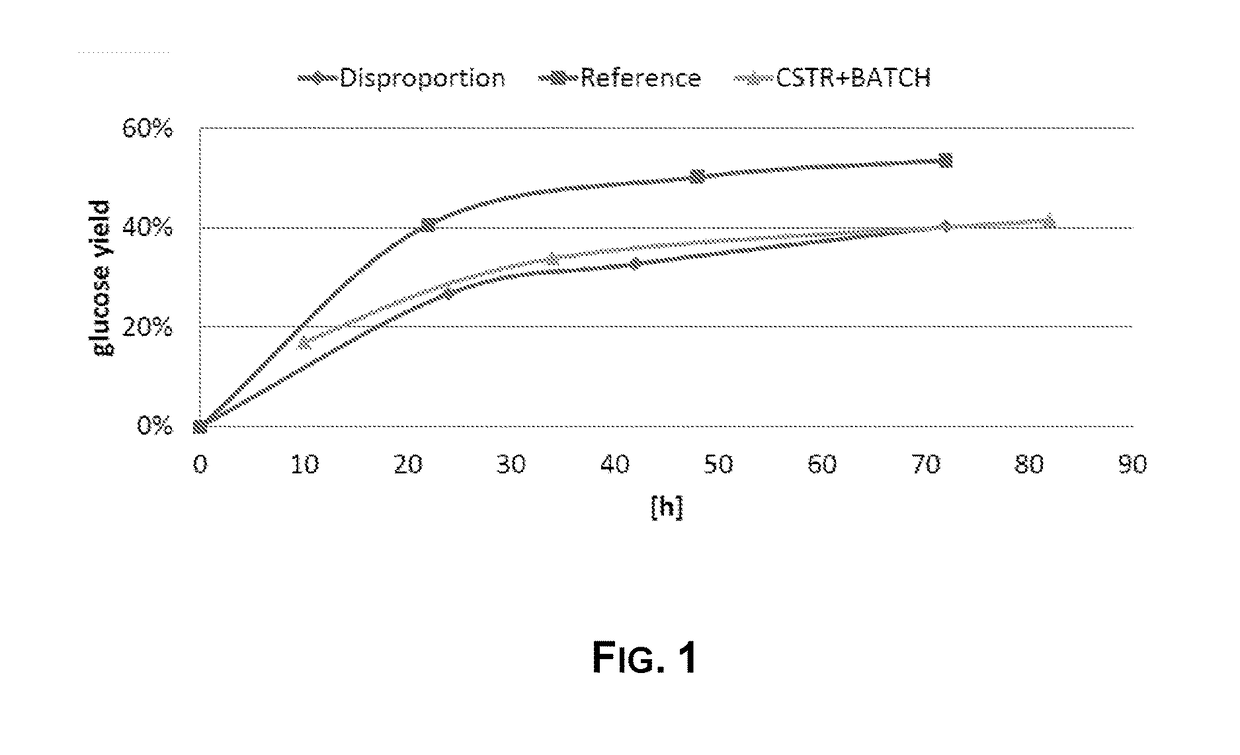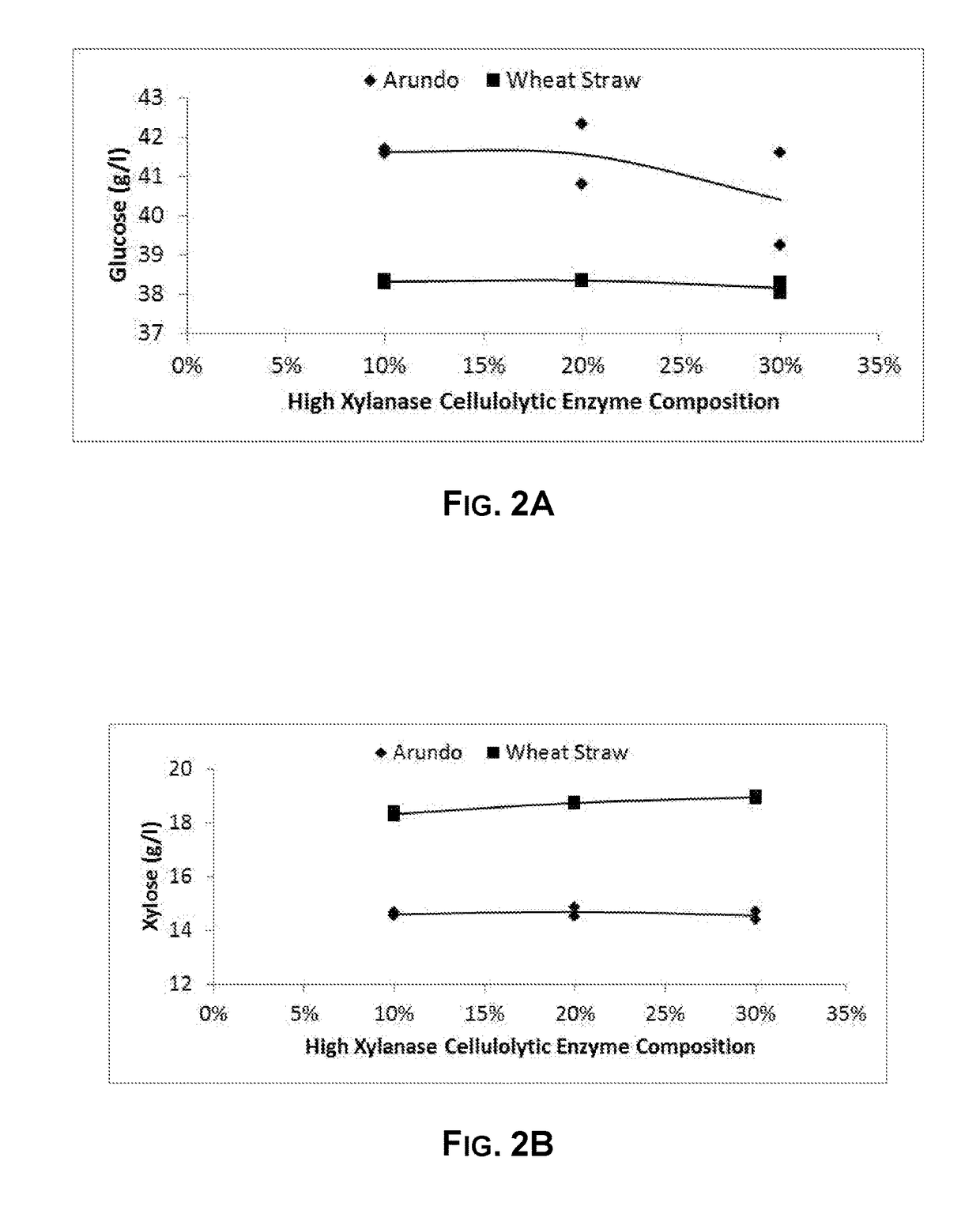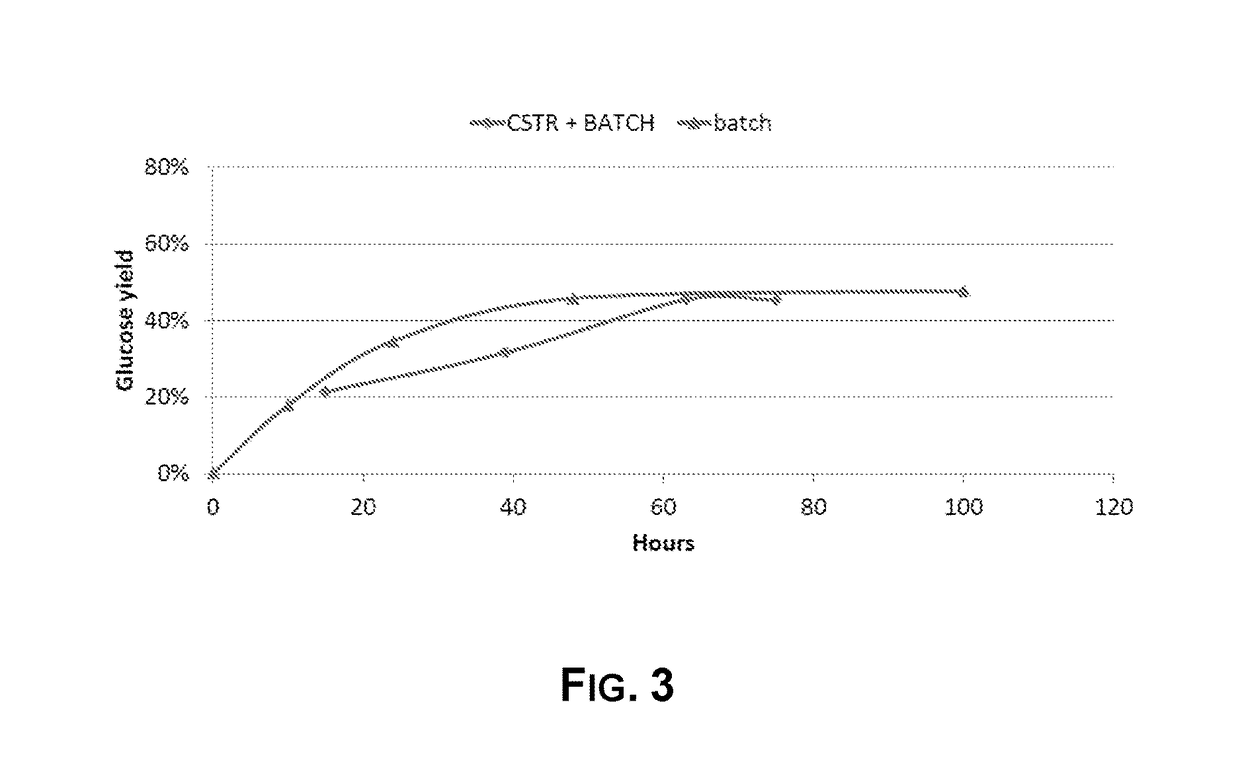Enzymatic Hydrolysis with Hemicellulolytic Enzymes
a technology of hemicellulolytic enzymes and enzymes, which is applied in the field of enzymatic hydrolysis with hemicellulolytic enzymes, can solve the problems of inefficient mixing, more detailed operations, and limitations, and achieve the effect of improving the yield of the resultant sugars
- Summary
- Abstract
- Description
- Claims
- Application Information
AI Technical Summary
Benefits of technology
Problems solved by technology
Method used
Image
Examples
example 1
Comparison of Two Stage Hydrolysis with First Step of CSTR Vs. Batch
[0247]Wheat straw was introduced into a continuous reactor and subjected to a soaking treatment at a temperature of 158° C. for 65 minutes. The soaked mixture was separated in a soaked liquid and a fraction containing the solid soaked raw material by means of a press. The fraction containing the solid soaked raw material was subjected to steam explosion at a temperature of 200° C. for a time of 4 minutes to produce a solid stream.
[0248]Soaked liquid was subjected to a concentration step by means of a membrane filtration step, which also removes a portion of acetic acid. First, soaked liquids were subjected to a preliminary pre-separation step to remove solids, by means of centrifugation and macro filtration (bag filter with filter size of 1 micron). Centrifugation was performed by means of an Alfa Laval CLARA 80 centrifuge at 8000 rpm. The soaked liquid was then subjected to concentration by means of a Alfa Laval 2....
example 2
Addition of Xylanase-Containing Enzyme Composition and Effect on Glucose Yield
[0265]Arundo donax (giant reed) and wheat straw were each pretreated in a two-stage steam explosion reactor. The wheat straw was pretreated by cooking in a two-stage process. In the first stage cook, the temperature was maintained at 158° C. for 65 minutes, and the liquid was squeezed from the material after the first stage cook. In the second stage cook, the squeezed material (dry solids) was subjected to a temperature of 195° C. for 4 minutes. The liquid that was squeezed out after the first cook and the solids from the second cook were combined to form pretreated wheat straw slurry
[0266]30 mM sodium acetate was added to the material in order to increase the pH buffering capacity and reduce pH drift during the trial. Total solids in the final blend of cellulosic material with enzymes was 15% for arundo and 12% for wheat straw.
[0267]The cellulosic material was mixed, pH adjusted, and equilibrated as follo...
example 3
Improved Hydrolysis of Pre-Treated Wheat Straw in Continuous Reactor by Increased Xylanase Activity
[0272]Hydrolysis was performed on pretreated wheat straw prepared as described in Example 1. The following reactions were performed and compared:[0273]Pure batch hydrolysis using CPrepA;[0274]Pure batch hydrolysis using CPrepA:XPrep in a mass dose ratio of 80:20;[0275]First stage CSTR followed by later stage batch reactor hydrolysis using CPrepA; and[0276]First stage CSTR followed by later stage batch reactor hydrolysis using CPrepA:XPrep in a mass dose ratio of 80:20
[0277]The pure batch hydrolyses were each performed in a mixed tank reactor filled with a total of 15 kg reaction mass. CPrepA or CPrepA:XPrep (80:20) was added at the start of the reaction. The reaction was performed at 20% dry matter, 50° C. and pH 5.0 for the CPrepA:XPrep (80:20) batch reaction and at 19% dry matter, 50° C. and pH 5.0 for the CPrepA batch reaction. The CPrepA dose in the batch reaction was 4.9% (weight / ...
PUM
 Login to View More
Login to View More Abstract
Description
Claims
Application Information
 Login to View More
Login to View More - R&D
- Intellectual Property
- Life Sciences
- Materials
- Tech Scout
- Unparalleled Data Quality
- Higher Quality Content
- 60% Fewer Hallucinations
Browse by: Latest US Patents, China's latest patents, Technical Efficacy Thesaurus, Application Domain, Technology Topic, Popular Technical Reports.
© 2025 PatSnap. All rights reserved.Legal|Privacy policy|Modern Slavery Act Transparency Statement|Sitemap|About US| Contact US: help@patsnap.com



